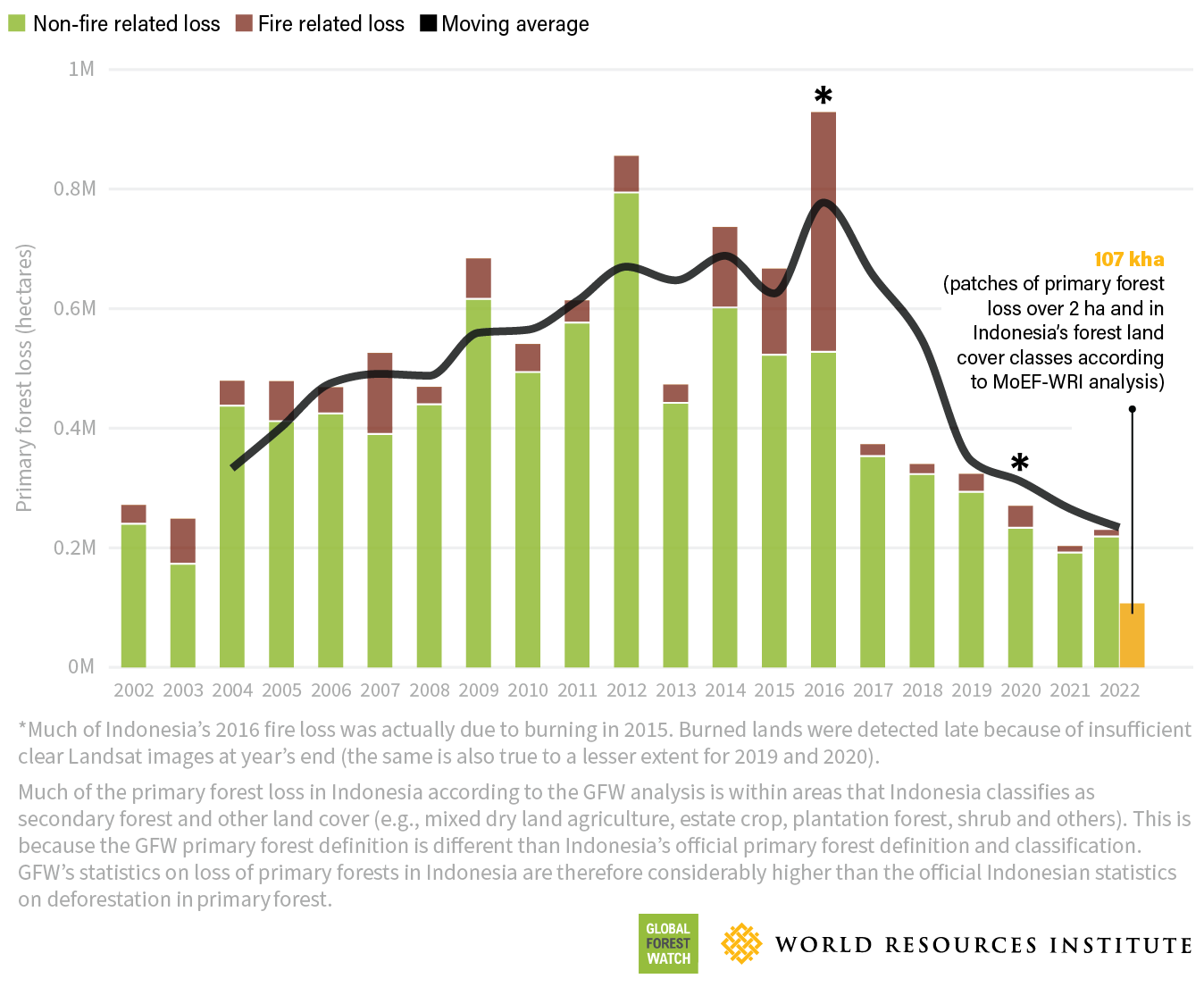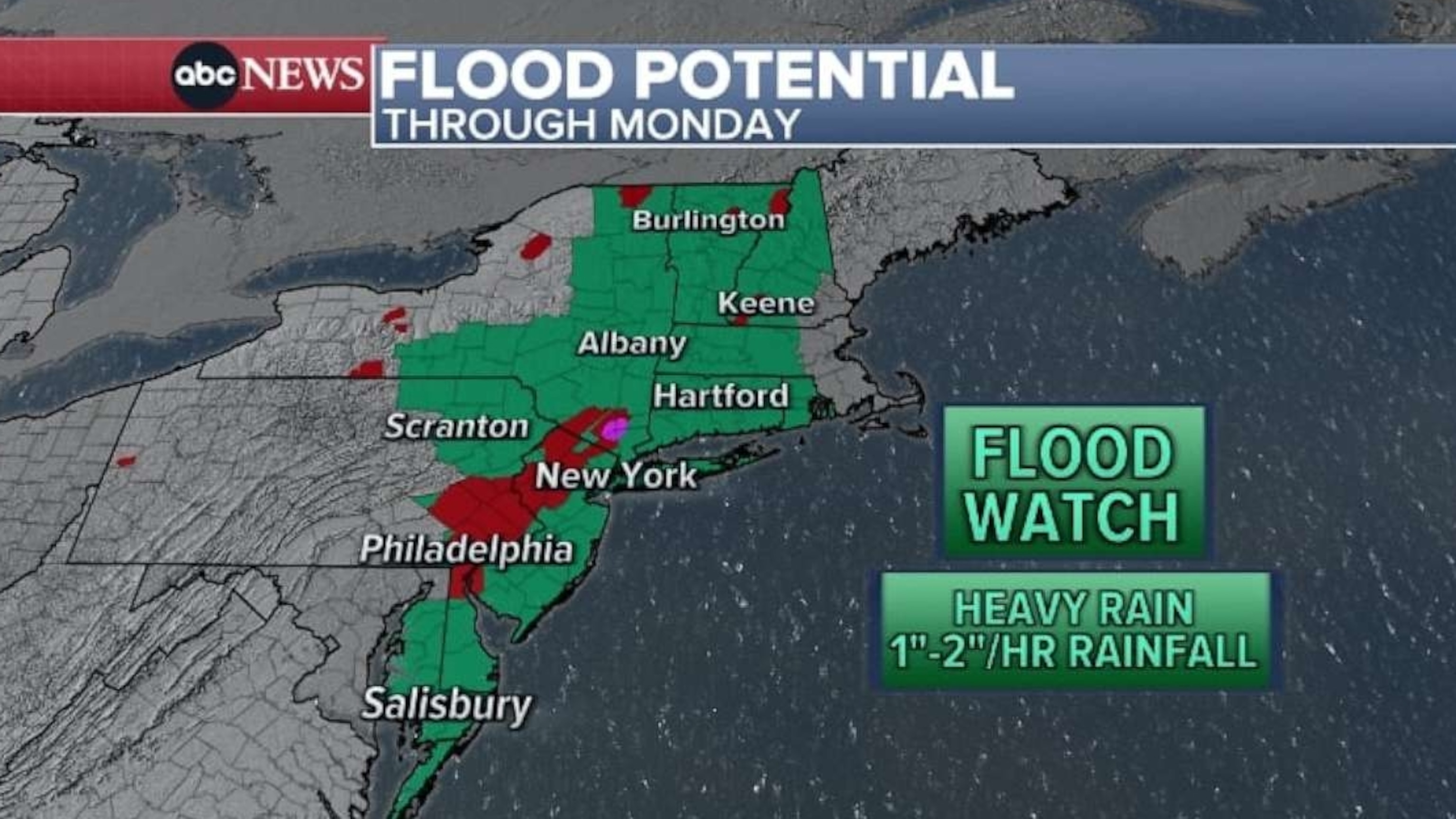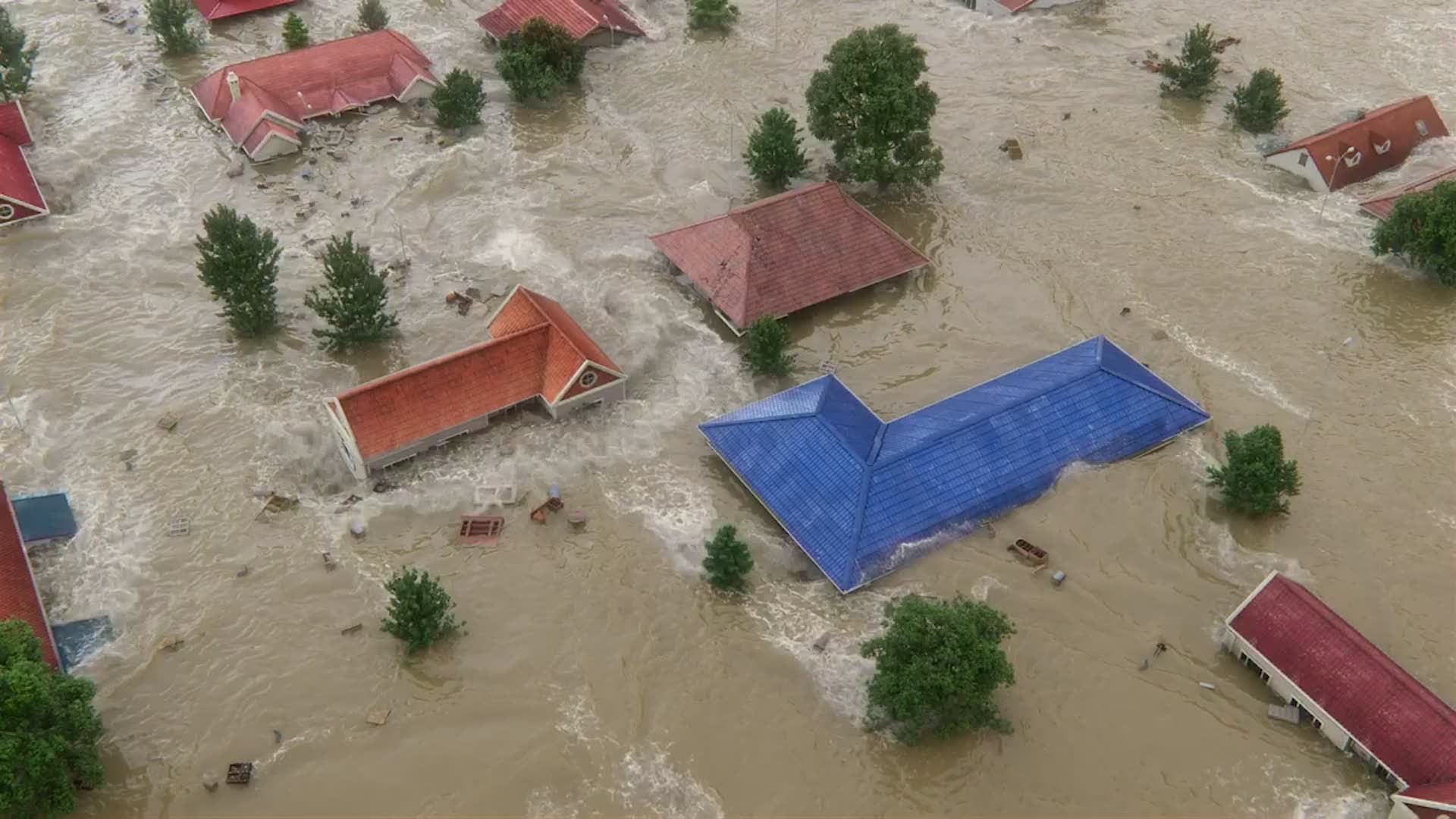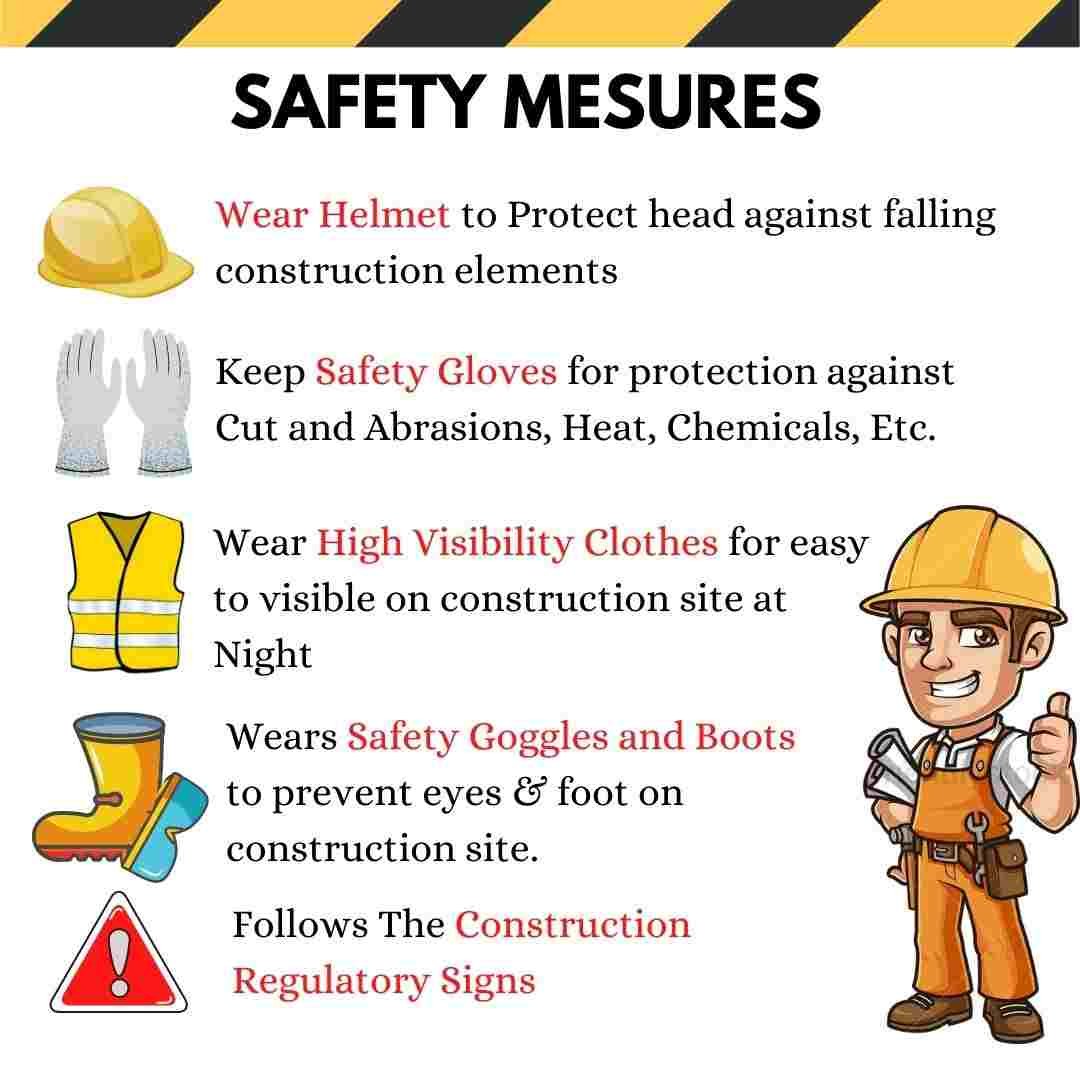The Impact Of Wildfires: Driving Record-High Global Forest Loss

Table of Contents
The Devastating Effects of Wildfires on Global Forest Loss
Wildfires inflict catastrophic damage, leading to significant and long-lasting consequences for the planet. Their impact extends far beyond the immediate destruction of trees, impacting countless aspects of our environment and human well-being.
Biodiversity Loss
Wildfires cause devastating biodiversity loss. The intense heat destroys habitats, leading to the death of countless plant and animal species. Many animals perish directly in the flames, while others are forced to abandon their homes, often with fatal consequences. The loss of crucial habitats can drive vulnerable species towards extinction.
- Loss of keystone species: The disappearance of keystone species can trigger cascading effects throughout the ecosystem.
- Disruption of ecological balance: The delicate balance of ecosystems is severely disrupted, potentially leading to irreversible changes.
- Reduced genetic diversity: The destruction of large areas of forest significantly reduces genetic diversity, making the remaining populations more vulnerable.
Examples include the koala populations decimated by Australian wildfires and the countless bird species losing their nesting grounds. The long-term recovery of biodiversity after a severe wildfire can take decades, if not centuries.
Carbon Emissions and Climate Change
Wildfires are significant contributors to greenhouse gas emissions, releasing massive amounts of carbon dioxide (CO2), methane (CH4), and black carbon into the atmosphere. This exacerbates climate change, creating a dangerous positive feedback loop. Warmer temperatures and drier conditions, resulting from climate change, increase the frequency and intensity of wildfires, leading to even more carbon emissions. The burning of peatlands, a significant carbon store, further accelerates this destructive cycle. Data from organizations like the Global Carbon Project highlight the alarming contribution of wildfires to global carbon emissions.
Air Quality Degradation
Wildfire smoke contains numerous harmful air pollutants, including particulate matter (PM2.5 and PM10), carbon monoxide (CO), and ozone (O3). These pollutants severely impact human health, causing respiratory illnesses like asthma and bronchitis, cardiovascular problems, and even premature death. The economic costs associated with wildfires are substantial, including increased healthcare expenses, lost productivity due to illness, and damage to infrastructure. The widespread haze caused by wildfire smoke can significantly reduce visibility, affecting transportation and other essential services.
Contributing Factors to Increased Wildfire Frequency and Intensity
The increasing frequency and intensity of wildfires are a complex issue with multiple contributing factors, many of which are interconnected and exacerbated by human activity.
Climate Change
Climate change is a primary driver of increased wildfire risk. Rising global temperatures lead to prolonged droughts and more extreme weather events, such as heatwaves and lightning storms. These conditions create ideal environments for wildfires to ignite and spread rapidly. Regions like the western United States, Australia, and the Amazon rainforest are experiencing increasingly severe wildfire seasons due to these climate-related changes.
Deforestation and Land Management Practices
Deforestation creates vast expanses of dry, flammable vegetation, providing ample fuel for wildfires. Unsustainable forestry practices, including clear-cutting and inadequate forest management, increase wildfire vulnerability. Poor land management, such as the suppression of naturally occurring low-intensity fires, can lead to the accumulation of excessive fuel loads, resulting in larger, more intense wildfires. The expansion of agriculture and urbanization further encroaches on natural landscapes, increasing the interface between human settlements and wildlands, raising the risk of wildfires.
Human-caused Wildfires
A significant percentage of wildfires are started by human negligence or arson. Activities such as discarded cigarettes, unattended campfires, and power line failures are major ignition sources. Arson also contributes significantly to the number of wildfires, particularly in areas with underlying social or economic issues. Statistics from various fire agencies consistently show a substantial portion of wildfires are human-caused, highlighting the need for greater awareness and prevention efforts.
Mitigating Global Forest Loss from Wildfires: Strategies for Action
Combating record-high global forest loss requires a multifaceted approach involving various stakeholders, from governments and international organizations to local communities and individuals.
Improved Forest Management
Sustainable forestry practices are vital in mitigating wildfire risk. This includes implementing preventative measures such as controlled burns (prescribed fires) to reduce fuel loads and create firebreaks. Improved forest thinning and the removal of dead or diseased trees can significantly reduce the intensity and spread of wildfires. Investing in early detection and suppression technologies, including aerial surveillance and improved firefighting capabilities, is also crucial.
Climate Change Mitigation
Addressing climate change is paramount to reducing the frequency and intensity of wildfires. Global efforts to reduce greenhouse gas emissions are essential to slowing down the warming trend and mitigating the impacts of climate change. This includes transitioning to renewable energy sources, improving energy efficiency, and adopting sustainable transportation systems.
Community Engagement and Education
Raising public awareness about wildfire prevention and safety is essential. Public education campaigns can inform people about the risks associated with wildfires, how to prevent them, and how to respond safely during a wildfire. Community-based wildfire preparedness programs can empower local residents to take proactive measures to protect their homes and communities.
International Collaboration
International cooperation is critical for effective wildfire management. Sharing best practices, resources, and technological advancements across borders is crucial. Joint research efforts can improve our understanding of wildfire dynamics and develop more effective prevention and suppression strategies. International agreements and collaborations can facilitate the exchange of information and coordinate global efforts to combat this pressing environmental challenge.
Conclusion
The devastating impact of wildfires on global forest loss is undeniable. These events not only destroy vital ecosystems and biodiversity but also contribute significantly to climate change and negatively affect human health and economies. The contributing factors are complex and interconnected, highlighting the urgent need for a comprehensive and collaborative approach. Combating record-high global forest loss requires immediate and collective action. Let's work together to prevent wildfires, protect our forests, and implement sustainable land management practices for future generations. Support organizations dedicated to wildfire prevention and forest conservation, advocate for climate change mitigation policies, and promote sustainable practices in your community. Together, we can make a difference in reducing global forest loss and protecting our planet.

Featured Posts
-
 La Repression Chinoise En France Temoignages Et Analyses
May 25, 2025
La Repression Chinoise En France Temoignages Et Analyses
May 25, 2025 -
 Traders Reduce Boe Rate Cut Bets As Pound Rises Post Inflation Data
May 25, 2025
Traders Reduce Boe Rate Cut Bets As Pound Rises Post Inflation Data
May 25, 2025 -
 Trade War Intensifies Another Downturn For Dutch Stocks
May 25, 2025
Trade War Intensifies Another Downturn For Dutch Stocks
May 25, 2025 -
 2002 Submarine Scandal French Investigation Points To Malaysias Former Prime Minister Najib
May 25, 2025
2002 Submarine Scandal French Investigation Points To Malaysias Former Prime Minister Najib
May 25, 2025 -
 Is Tim Cooks Leadership Facing Challenges Apples Recent Struggles
May 25, 2025
Is Tim Cooks Leadership Facing Challenges Apples Recent Struggles
May 25, 2025
Latest Posts
-
 Flash Flood Emergency Preparedness A Step By Step Guide
May 25, 2025
Flash Flood Emergency Preparedness A Step By Step Guide
May 25, 2025 -
 Flash Flood Emergency What To Know And How To Stay Safe
May 25, 2025
Flash Flood Emergency What To Know And How To Stay Safe
May 25, 2025 -
 Urgent Flood Warning Immediate Actions To Take Nws
May 25, 2025
Urgent Flood Warning Immediate Actions To Take Nws
May 25, 2025 -
 Nws Flood Warning Protecting Yourself And Your Property
May 25, 2025
Nws Flood Warning Protecting Yourself And Your Property
May 25, 2025 -
 Flood Warning In Effect Essential Safety Measures From The Nws
May 25, 2025
Flood Warning In Effect Essential Safety Measures From The Nws
May 25, 2025
